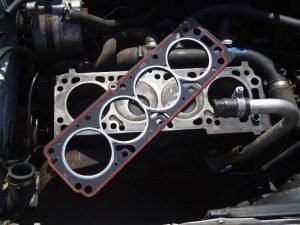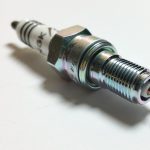An efficient engine is crucial to drive a car smoothly and a best quality coolant is mandatory to ensure the efficiency of the engine. It is responsible to keep the engine cool or maintain engine temperature and work effectively with the help of the radiator and water pump.
Car coolant is one of the most crucial components of the engine consisting of multiple tools. Each tool plays a crucial role to ensure its normal functioning such as a water pump that helps coolant to circulate heat while radiators dissipate the air. Slight damage or leaking of any part of the coolant can result in a low coolant level.
Low coolant levels can greatly reduce engine performance and also cause multiple troubles. It can lead to gasket head damage and destruction of the engine if ignored or left untreated. Therefore, coolant maintenance is crucial to prevent engine damage.
What Are The Signs And Symptoms of Low Coolant?
Overheating and fast fluctuation in the temperature gauge are the most common signs of low coolant in a car. You can explore some major symptoms and their details here;
Overheating
One of the major signs your car has low coolant is overheating. The reason is that, when the coolant level reduces to an extreme level, it fails to transfer the heat away from the engine and causes overheating.

White Smoke Emission
The emission of white smoke from the exhaust pipe is also a sign of low coolant. It happens due to the damaged gasket heads because they start mixing oil with the antifreeze. It results in the combustion of antifreeze as white smoke.

Sweet Smell of Anti-Freezing Agent
If you are experiencing a sweaty odor while driving the car, you probably have low coolant. The reason is that an anti-freezing compound is used to avoid the freezing of radiator fluid. When the coolant level becomes low, the leaking of antifreeze causes a sweet smell.
Poor Performance of Car Heater
Another sign of low coolant is the poor performance of car heaters. The reason is that car heaters also use the same coolant to ensure their right functioning. Due to airlock damage in the heater core, the coolant starts leaking and leads to a low coolant level.

Warning Light Appearance
Almost all modern cars have automatic systems to monitor coolant levels. When it becomes low, the warning light starts appearing on the car dashboard. It indicates you need to check your coolant level immediately and fill it to the required level to avoid engine damage.
However, old-model cars do not have this feature.
Causes of Low Coolant
Effective and Immediate measures to fix low coolant issues are crucial to ensure the right working of the engine and avoid damage to other parts of the engine. However, awareness of common causes of low coolant is essential to make the right decision.
Some major culprits may involve;
Coolant Leaking
External and internal coolant leaking from the thermostat, or any other part. However, it can be easily noticed and fixed even without visiting the mechanic.
Damage Gasket Head
Damage to the gasket head can also cause low coolant in cars because it is responsible for separating oil, coolant, and other fluids. When it becomes damaged or worn out, it starts mixing these fluids, and the combustion of coolant results in reducing its level.

Faulty EGR Cooler
Another main but rare culprit is a faulty EGR cooler. A slight crack or damage inside EGR can cause coolant leaking and reduce its level.
Improper Sealing Of Coolant System
Improperly sealed or leaked coolant systems can also be a major reason behind low coolant. The reason is that poor sealing allows evaporation or coolant to escape through the radiator cap.
How To Fix It?
- The very first step to address the issue of low coolant is finding the leaking point or the root cause of the problem. You can perform this task manually or also hire a professional mechanic.
- The next step is the repairing of cracked or damaged parts of the coolant system. You can simply exchange the hoses or faulty parts. However, in case of radiator leakage, you need to send your car for professional service.
- Replacing damaged hoses and radiators is also the best solution to fix low coolant issues.
- Regularly monitoring coolant levels, hoses, and radiators is essential to prevent leaking or low coolant level issues in the future.
Takeaway
No one can deny the importance of coolant levels for the proper functioning of the engine. An extreme drop in coolant level can reduce the engine performance and badly damage one or more parts including the gasket head which is too expensive to repair or replace. Therefore, regular inspection of the coolant level is crucial to ensure the proper functioning of the engine.
Last Updated on May 21, 2023 by admin

Mac is an Automotive enthusiast. He owns up to 15 vehicles. He deals with Auto problems and shows his skill to Car owners who are seeking any type of Car help.





